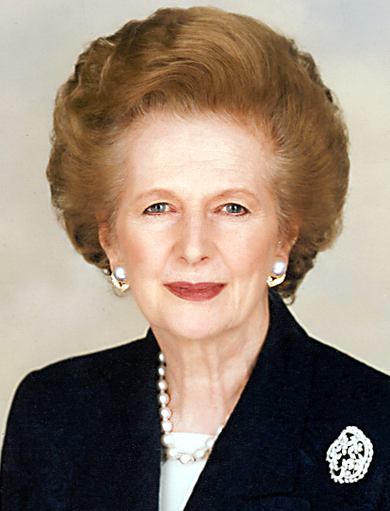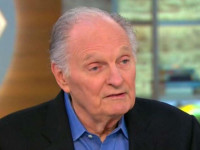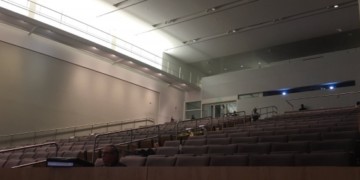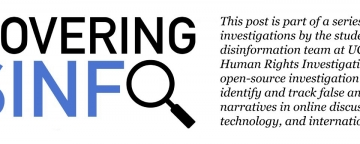Tim RothBlockedUnblockFollowFollowingDec 2
The 2016 primary elections were a painful experience for a lot of Americans. The toxicity from both of these primaries helped fuel a general election that was an even more painful experience. Both Hillary Clinton and Donald Trump had historically low approval ratings compared to past candidates running for President, so a depressing number of Americans felt they were choosing “the lesser of two evils” and a lot Americans decided to not vote out of frustration.
There is a strong possibility that the 2020 primary elections and the general election in November of 2020 could be worse. The election could be extremely chaotic if somebody like Jeff Flake, John Kasich, or Mitt Romney challenges President Trump for the 2020 Republican nomination. If the challenger beats President Trump, then Trump might run as an independent. The other possibility is that nobody challenges Trump in the primary, but a conservative runs as a 3rd party candidate like Evan McMullin did in 2016. Within the Democratic Party there is a lot of tension between moderates and left-leaning progressives over issues like Medicare-for-all. If a more progressive candidate wins the primary, there are increased odds that somebody like Michael Bloomberg will run as a center-left independent. On the flip side of this scenario: if a more moderate Democrat wins there are increased odds that somebody from the progressive wing of the party may run as an independent candidate or the progressive wing will mobilize behind one of 3rd parties that usually qualify for ballot access like Jill Stein of the Green Party.
These potential scenarios mean that in the near future we could have an election like the 1912 Presidential Election when Theodore Roosevelt was so frustrated with fellow Republican William Howard Taft that he formed the Progressive Party (commonly called the Bull Moose Party). This decision split the Republican vote and allowed Democratic candidate Woodrow Wilson to win a landslide 81.7% of the Electoral College votes while only receiving 41.8% of the popular vote. If you combine the popular vote percentages of Taft (23.2%) and Roosevelt (27.4%), 50.6% of the people voted for Republicans!
In addition, the increased odds that a 3rd party candidate will win Electoral College votes means we might have to dust off the 12th Amendment that is invoked when no candidate wins the 270 vote majority on Election Day. This means that the House and Senate would choose the next President and the Vice-President. With the rise of information bubbles and social media, a 12th Amendment election could cause a dangerous escalation of the current partisan tribalism.
The 1912 Presidential election is a vivid example of the weaknesses of our first-past-the-past voting system (FPTP). In FPTP elections, it’s possible for a candidate to win by substantially less than a majority if votes are split up across three or more candidates. So, smaller parties have a tendency to merge into two coalition parties to make it easier to win elections. This tendency for the formation of two parties is especially strong in democracies where the chief executive is directly elected and has a lot of power like President of the United States. (In political science journals this tendency is called Duverger’s Law.) By voting for the smaller parties, voters can make it easier for a candidate they really don’t like to win. This frustrating outcome is also known as the spoiler effect.
In addition, the vote splitting that FPTP causes is very noticeable during presidential primary season where 5, 10, even 20 people can be in running to get the party’s nomination.
If we carefully study how other advanced democracies successfully avoid these frustrations and study the original goals of the American Constitution, we can replace the flawed presidential primary system with a far better alternative. This plan carefully restructures the small state protections of Congress, uses a state-based proportional representation system with a triple-backup-20% threshold to avoid an excessive number of parties, and switches this country to the parliamentary system like almost every other advanced democracy in the world. Parties may still have primary elections to choose the leader of each party and potential President, but the demand for these elections will immediately decrease. Because voters would now have the ability to vote for multiple parties, the people who want to shift the ideology of an party no longer need primary elections to achieve their goals.
Note: Conservatives will be initially be very skeptical of this plan because the idea of parliamentary system reminds them of the left-leaning European democracies they complain about, but conservatives should remember that Margaret Thatcher rose to power via the parliamentary system. So, this isn’t a covert plan to turn America into a socialist European parliament. As I will explain in Part 2 of this series, this plan was deliberately designed so that it would be impossible for either party to know who benefits more from this plan.

A major benefit to adopting a parliamentary system is that this change addresses growing bipartisan concerns that the post-World War 2 executive branch has gained too much power from the legislative branch. The constant gridlock between the executive and legislative branches is causing many Americans to lose faith in democracy. This loss of faith is troubling because the presidential system is far more vulnerable to the rise of dictatorships as pointed out by the well-respected Yale political scientist Juan Linz who observed in a 1990 article called the “Perils of Presidentialism” that “aside from the United States, only Chile has managed a century and a half of relatively undisturbed constitutional continuity under presidential government.” There are a lot of reasons why the American presidential system has lasted longer than other presidential systems, but there’s always the grim possibility that American democracy will face far greater challenges than the Great Depression or World War 2. We should do some “future-proofing” now to give future generations a better Constitution to help them maintain democratic values during challenges we can’t even imagine.
This plan is such a big change that it’s impossible to know which of the two parties will benefit. The inability to determine who will benefit was a deliberate choice because neutrality is essential in order to convince three-quarters of the state legislatures to ratify this amendment.
Both parties will have to completely rethink their campaign strategies in the absence of Electoral College battleground states and voters will think about politics in a different way when they more than two choices.
To any high-ranking members of the two major parties reading this article: yes, this plan could reduce the power of your party, but please keep reading to learn about the triple-backup-20% threshold system before passing judgement. Most importantly, you will no longer have to worry that a presidential primary will be won by an outsider who ushers in sudden and unwelcome shifts in ideology that harm down-ticket races.
Even with the stabilizing effects of the triple-backup-20% threshold, I fully expect a lot of criticism about such a huge change. However, let’s keep in mind the deep frustration that many Americans have with our current system. Plus, government dysfunction has lead to multiple government shutdowns in past 30 years and a stunning event that took in place in 2011: the credit rating of the credit rating of the most powerful economy in the world was downgraded.
Finally, let’s remember that the Framers had no idea how powerful political parties would become and how parties would become a powerful part of the system of check and balances.
To read a summary of how to convert the small state protections of the Senate into a parliamentary system: https://medium.com/@TimRothNFP/growing-risks-of-gridlock-convert-small-state-protections-of-congress-into-a-parliament-system-e447f2f493f7
Note: I should point out why I’m writing this article after many years of being a fan of the instant runoff voting variation of ranked choice voting. While I definitely prefer the two variations of ranked choice voting (RCV) over the current first-past-the-post system, I’m very aware of the weaknesses of instant runoff voting that Maine recently adopted and the multi-member district single transferable vote system that the group FairVote is proposing. The triple-backup-20% threshold proportional plan solves the spoiler effect without the sometimes frustrating results that can occur with the various forms of RCV. For example, the Vermont city of Burlington repealed their instant runoff voting system after confusing and frustrating results in an 2009 election for mayor. In addition, the 2013 Australian Senate election showed how single transferable voting can also lead to very frustrating and controversial results. Finally, I’m very concerned about the need for more complicated computers to count either of the two ranked choice voting system because more complicated systems are harder to audit and are more vulnerable to security breaches. Plus, more complex voting systems and more complex counting equipment make it easier for dangerous and unethical politicians to use social media to whip up accusations of rigged elections if they under perform on election day.




























Connect with us